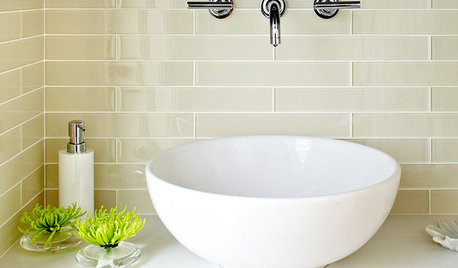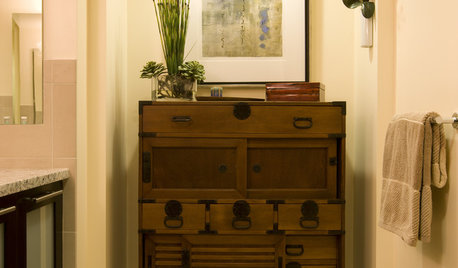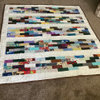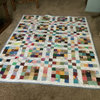Tricks for working with HSTs
loisflan
10 years ago
Related Stories

HOME OFFICES13 Decorating Tricks for a More Pleasurable Home Office
Use these suggestions to keep your work-from-home life from feeling like just another lousy day at the office
Full Story
BATHROOM DESIGNDesigner Trick: Take Your Shower Tile to the Ceiling
Tile the whole wall in your shower to give your bath a light and lofty feel
Full Story
INSIDE HOUZZ9 Power-User Tricks to Get More From Houzz
Search faster and better, tap into design guides, manage your ideabooks and see photos on your flat-screen TV
Full Story
SMALL KITCHENSKitchen of the Week: Space-Saving Tricks Open Up a New York Galley
A raised ceiling, smaller appliances and white paint help bring airiness to a once-cramped Manhattan space
Full Story
PLANTING IDEAS8 Design Tricks From Sunny Botanical Gardens
Take a yard from stale to stupendous with ideas from these expertly designed gardens in the U.S. Sunbelt
Full Story
REMODELING GUIDESFinishing Touches: Pro Tricks for Installing Fixtures in Your Tile
Cracked tile, broken drill bits and sloppy-looking fixture installations? Not when you follow these pro tips
Full Story
DECORATING GUIDESTeach a Tansu New Tricks
Traditionally used for transporting treasures, the tansu is now a classic casegood in today's homes
Full Story
CLEANINGEco-Friendly Tips and Tricks for Cleaning Your Home
Are you wary of using chemicals to clean? These simple products and tricks will keep your home spotless naturally
Full Story
SELLING YOUR HOUSE10 Tricks to Help Your Bathroom Sell Your House
As with the kitchen, the bathroom is always a high priority for home buyers. Here’s how to showcase your bathroom so it looks its best
Full Story
KITCHEN DESIGNTrick Out Your Kitchen Backsplash for Storage and More
Free up countertop space and keep often-used items handy by making your backsplash more resourceful
Full StoryMore Discussions








geezerfolks_SharonG_FL
bozogardener
Related Professionals
Paramus Furniture & Accessories · Phoenix Furniture & Accessories · Silver Spring Furniture & Accessories · Four Corners Flooring Contractors · Avon Flooring Contractors · Fishers Flooring Contractors · Gilroy Flooring Contractors · Kendall West Flooring Contractors · Myrtle Beach Flooring Contractors · Redlands Flooring Contractors · Seymour Flooring Contractors · South Peabody Flooring Contractors · Spartanburg Furniture & Accessories · Champlin Furniture & Accessories · Discovery Bay Furniture & Accessorieslittlehelen_gw
toolgranny
grammyp
meldy_nva
geezerfolks_SharonG_FL
toolgranny
wendyfaye
geezerfolks_SharonG_FL
fran1523